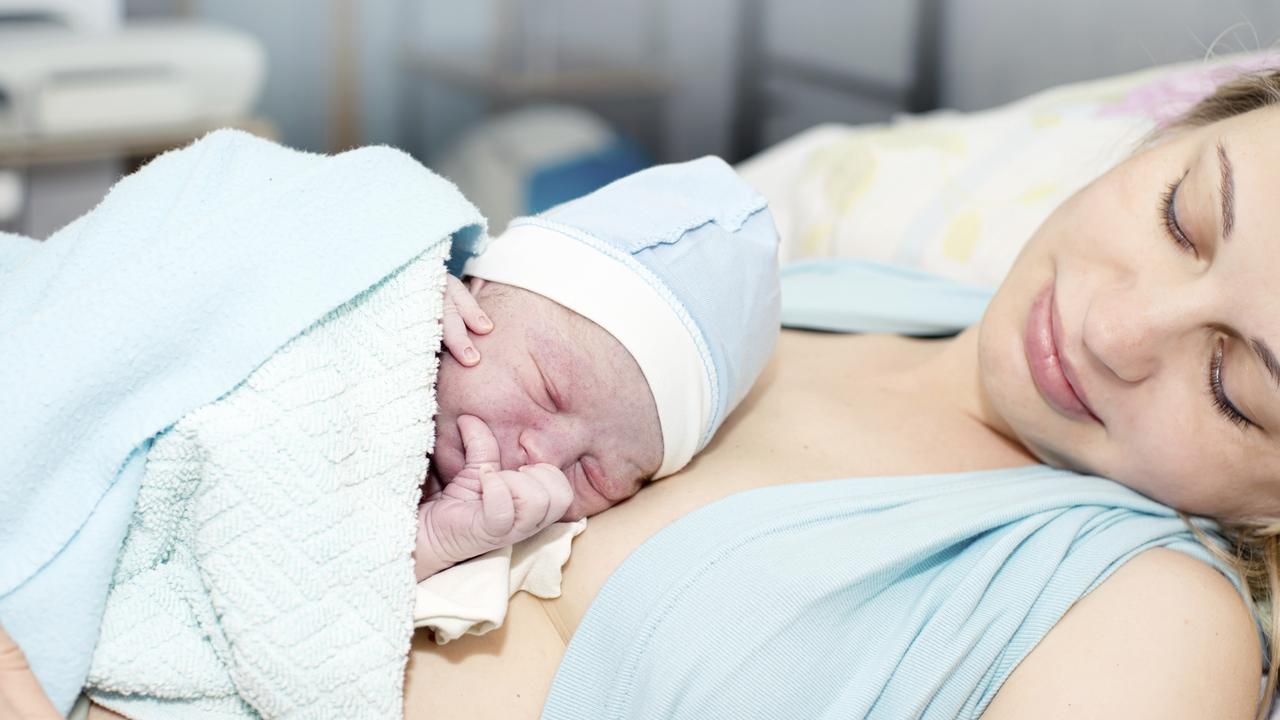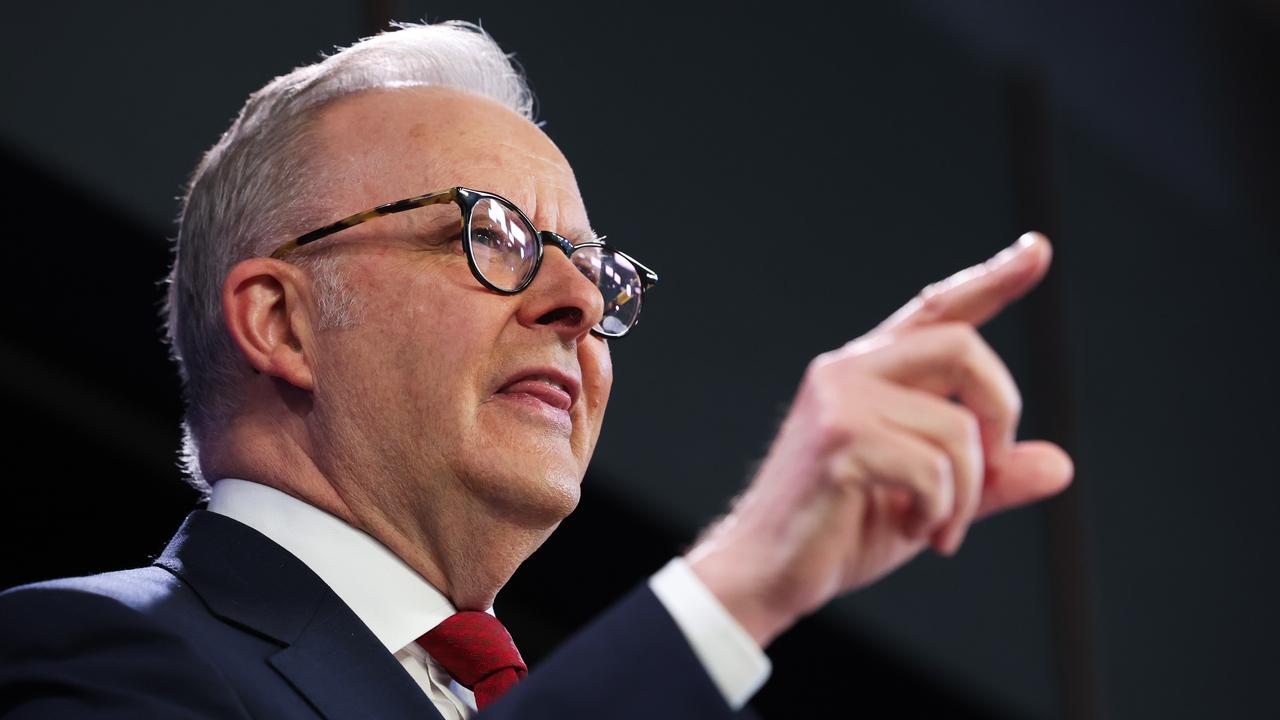Australian Federal Budget 2020: What it means for you
There’s plenty of good news for many Australians in the Budget including tax cuts and other incentives. Here’s what’s in it for you.

Despite the trillion-dollar debt, here’s plenty of good news for many Australians in the Budget.
Here’s what’s in it for you.
If you’re a taxpayer …
Yes, it’s finally been confirmed that Aussies will get a tax cut and it will be backdated so once the legislation is passed, they will see the extra money in their pay packets.
The government will bring forward stage 2 of its legislated tax cuts, that will see the 19 per cent threshold rise from $37,000 to $45,000, and the 32.5 per cent threshold go from $90,000 to $120,000.
It means those earning $50,000 a year will get $1080 back and those on $90,000 a year will get $1215 back. Those on more than $120,000 will get $2565 back.
There’s also more good news for lower income earners.
The Low and Middle Income Tax Offset will also stay for an extra year, meaning eligible individuals will get $1080 and dual income couples will get $2160.
When the offset is combined with the tax cuts, singles could get back up to $2745 and dual-income families could get back up to $5490.
RELATED: Budget winners and losers
RELATED: How to get your backdated tax cut
If you’re on a government payment …
The cash payments continue for this group, who are set to receive an extra $250 payment from December and another $250 payment from March next year, at a cost of $2.6 billion to the Budget.
This includes those on the age pension, disability support pension, carer payment, family tax benefit including the double orphan pension (not in receipt of a primary income support payment), carer allowance (not in receipt of a primary income support payment), pensioner concession card (not in receipt of a primary income support payment), Commonwealth seniors health card holders, and eligible Veterans’ Affairs payment recipients and concession card holders.
It follows two previous $750 payments made to social security and other eligible recipients.
RELATED: Aussies to get $500 bonus
If you’re pregnant …
The coronavirus has meant many people may have lost their jobs or worked reduced hours so may not meet the requirements of the government paid parental leave payment.
But the government will relax the rules a little so they are still covered.
Normally parents must have worked 10 of the previous 13 months before they gave birth or adopted a child to be eligible for the payment.
This will be changed to allow parents who give birth or adopt a child between March 22, 2020 and March 31, 2021, to still qualify for the payment if they have worked in 10 of the last 20 months, at a cost of $90.3 million over three years.
RELATED: Are you happy with the Budget? Have your say in our poll

If you hate dealing with your super …
The government is making a major change to how super funds work, saying a new account will not longer be automatically created every time someone changes jobs.
Instead, Australians will automatically keep their super fund when they change employers.
Super funds will also have to meet an annual performance test and poor performing funds will have to notify members of their underperformance.
An online comparison tool known as ‘YourSuper’ will also be established.
If you’re worried about getting into university …
Demand for uni places is expected to rise next year and the government will be providing an extra $299 million to fund 12,000 more undergraduate places.
It will also support 50,000 short online courses to provide a faster alternative for those wanting to upskill. This includes courses in teaching, health, science, information technology and agriculture.
If you are a young person looking for a job …
Businesses will be provided with incentives to hire young people, especially between the ages of 16 and 35 years old.
For those that hire someone under 30, a JobMaker hiring credit will be paid for up to 12 months at the rate of $200 a week.
There will also be a $100 a week credit available for hiring someone between 30 and 35 years old.
In order to access the credit, new employees must work for at least 20 hours a week, and must have been receiving JobSeeker Payment, Youth Allowance (Other) or Parenting Payment for at least one of the previous three months at the time of hiring.
All business, other than the major banks, will be able to take up the credit.
Businesses will be offered a 50 per cent wage subsidy for every apprentice they hire.
RELATED: Massive deficit revealed in Budget
If you are considering an apprenticeship …
The government is making it easier to pick up the tools, providing an extra 100,000 new apprenticeships and traineeships at a cost of $1.2 billion.
Businesses will be offered a 50 per cent wage subsidy for every apprentice they hire.
If you’re elderly and want to stay in your own home …
Demand for home care packages has been high, especially due to the coronavirus and the government will provide an extra 23,000 places at a cost of $1.6 billion.
This brings the total to 180,000 places and the government says 99 per cent of all those wanting in-home aged care will now have access to some form of support.
Funding will also be provided to improve skills in the aged care workforce and provide extra dementia training and support.
The government says it will also provide “significant additional investment” once it receives the final recommendations of the Royal Commission into aged care.

If you need access to mental health services …
Mental health has been a big concern during the coronavirus and the government will provide an extra $148 million to this area.
This will allow all Australians access up to 10 extra Medicare rebated psychology sessions with the support of their GP, doubling the number to 20 sessions.
More funding is also being provided to Lifeline, headspace, Beyond Blue and Kids Helpline.
In total the government is providing $5.7 billion in mental health support this year.
If you have ovarian cancer …
Your medication costs could be set to decrease with the listing of the drug Lynparza on the Pharmaceutical Benefits Scheme (PBS).
Instead of costing more than $140,000 per course, patients will now access the medicine at $6.60 per script for concession card holders, and around $41 per script for general patients.
If you have a business …
Businesses that need new equipment or would like to upgrade what they already have, will have a powerful incentive to bring forward these purchases.
Until June 22, any business with a turnover of less than $5 billion will be able to write off the full value of eligible assets they buy for their business.
Losses incurred to June 2022 will also be able to be offset against prior profits made in or after the 2018-19 financial year.
Businesses will also be encouraged to retrain or re-skill employees who are moved to a different role in the business, as they will no longer have to pay Fringe Benefits Tax (FBT) on this.
Those with an aggregated annual turnover between $10 million and $50 million, will also have access to up to 10 tax concessions including an exemption from FBT on carparking and work-related phones and laptops provided to employees.
If you want faster access to the internet …
If working from home is driving you crazy due to a bad internet connection, help may be on the way.
The Budget sees an extra $4.5 billion will be provided for the NBN, and another $29.2 million to fast-track the rollout of the 5G network.
If you care about jobs for women …
Australian women made up the majority of those who lost their jobs during the coronavirus pandemic and the government will provide $231 million over four years for the second Women’s Economic Security Package.
There will be increased grants for the Women’s Leadership and Development Program and
co-funded mentoring grants will be increased for women-founded start-ups.
A Women in Science, Technology, Engineering and Mathematics (STEM) Industry Cadetship program will be created to support 500 women to complete an advanced diploma through study and work-integrated learning experiences.
There will also be support for girls and women to gain STEM skills though programs like the Women in STEM Ambassador, the Women in STEM Entrepreneurship Grants Program and the Girls in STEM Toolkit.
A Respect@Work Council will also be established to address sexual harassment.

If you are worried about cybersecurity …
Hacking can wreck havoc on businesses and an extra $201.5 million will be provided as part of the 2020 Cyber Security Strategy to create a more secure online world.
This includes $37 million to grow Australia’s cyber security skills and $128 million to counter cyber criminals.
A further $450 million is being provided for law enforcement and intelligence agencies to keep Australians safe from foreign and domestic threats.
If you want to see more research and development funding …
An extra $2 billion will be provided in research and development incentives, including rewarding businesses that invest the most, removing the cap on refunds and lifting the rate.
The government will also provide $459 million extra funding to the CSIRO, $1 billion in extra research funding for universities and $1.9 billion in new funding to support low emissions and renewable technologies.
If you care about the environment …
Commonwealth National Parks will get their biggest single investment with an extra $233 million being provided to upgrade facilities in Uluru, Kakadu, Christmas Island and Booderee National Park.
In total an extra $1.8 billion is being provided to the environment including $67 million to restore mangroves, tidal marshes and sea grasses to help protect the health of Australia’s oceans.
Recycling will also get a $250 million boost for better infrastructure, in the hopes of stopping more than 600,000 tonnes of waste ending up in landfill and also creating 10,000 jobs.
There will also be $1.9 billion in new funding to support low emissions and
renewable technologies, helping to lower emissions and address climate change.
If you want to see more gas …
The government will provide $52.9 million to support the gas industry and help unlock five key gas basins starting with the Beetaloo Basin in the Northern Territory, and the North Bowen and Galilee Basins in Queensland.
Reforms include creating an Australian Gas Hub with more competitive and transparent prices, delivering an efficient pipeline and transportation market, and empowering gas customers.
If you’re a first homebuyer …
Those open to buying a brand-new home will benefit from the expansion of the government’s First Home Loan Deposit Scheme.
An extra 10,000 buyers will be able to use the scheme, which allows them to borrow with a 5 per cent deposit and avoid lenders mortgage insurance.
The value of the properties they can purchase has also been increased to $950,000 in Sydney, $850,000 in Melbourne and $650,000 in Brisbane.

If you think we should be building more affordable housing …
An extra $1 billion in low cost finance will be available for the construction of affordable housing, bringing the total available to $3 billion.
Another $150 million will also be available to construct new homes in regional areas as part of the Indigenous Home Ownership Program.
If you want better funding of the NDIS …
More Australians with a disability will be helped by the National Disability Insurance Scheme thanks to a $3.9 billion boost.
If you want to see more money go into road upgrades …
There will be $2 billion up for grabs for states to do road safety upgrades but it will be provided on a “use it or lose it” basis.
If one state takes too long to take advantage of the funding, another state will get the money.
An extra $1 billion will also be provided to support local councils to upgrade local roads, footpaths and street lighting.
If you want to see more infrastructure built …
The government will provide $14 billion for new or fast-tracked projects around Australia over the next four years, supporting 40,000 jobs.
Major projects across each state include:
• The Singleton Bypass and Bolivia Hill Upgrade in NSW;
• The upgrade of the Shepparton and Warrnambool Rail Lines in Victoria;
• The Coomera Connector in Queensland;
• The Wheatbelt Secondary Freight Network in Western Australia;
• The Main South Road Duplication in South Australia;
• The Tasman Bridge Upgrade in Tasmania;
• The Carpentaria Highway Upgrades in the Northern Territory, and
• The Molonglo River Bridge in the Australian Capital Territory.
If you are part of the manufacturing sector …
The government will invest an extra $1.5 billion in manufacturing over four years, with investment to go towards six priority areas: resources technology and critical minerals processing; food and beverage manufacturing; medical products; clean energy and recycling; defence industry; and space industry.
If you live or work in a regional area …
Those living in regional areas have really done it tough thanks to drought, fire and the coronavirus.
To support people in these areas, the government will provide almost $553 million in funding over four years.
This includes supporting regional tourism operators to attract domestic visitors back to regional areas through $51 million in funding over two years. There will also be an awareness campaign promoting regional Australia.
The government’s package of measures includes investment in community infrastructure, improving training among health students and money to help deliver digital services and technologies.
There will also be money to develop the skills of local leaders and for the installation of mobile phone infrastructure to cover mobile and digital black spots.
Farmers struggling with the impacts of drought will also have access to $2 billion in concessional loans.
If you are concerned about water …
The government will provide an extra $2 billion to build vital water infrastructure including dams, weirs and pipelines as part of the national water grid.
The investment in the National Water Infrastructure Development Fund will be done in partnership with the states and territories. This includes an extra $162 million for the Wyangala Dam and $121 million for the Dungowan Dam.
If you’re a farmer …
For those who have struggled with drought, the government will spend $156 million over four years to help farmers recover and prepare for future droughts.
This includes a further $2 billion in drought concessional loans, and $19.6 million to extend the National Drought and North Queensland Flood Response and Recovery Agency for another year.
A further $50 million to build on-farm dams, tanks and troughs will be provided.




